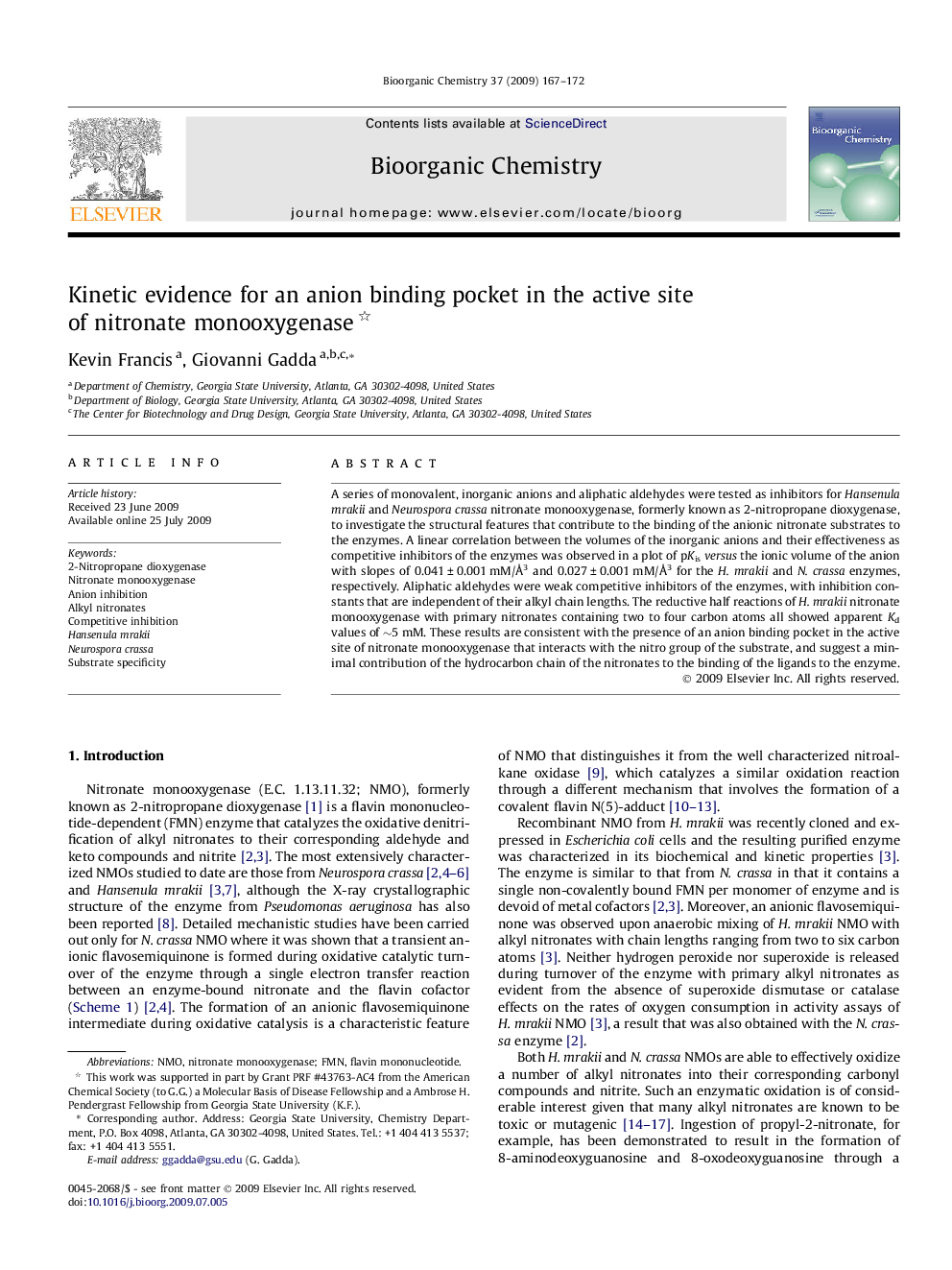| Article ID | Journal | Published Year | Pages | File Type |
|---|---|---|---|---|
| 1355784 | Bioorganic Chemistry | 2009 | 6 Pages |
A series of monovalent, inorganic anions and aliphatic aldehydes were tested as inhibitors for Hansenula mrakii and Neurospora crassa nitronate monooxygenase, formerly known as 2-nitropropane dioxygenase, to investigate the structural features that contribute to the binding of the anionic nitronate substrates to the enzymes. A linear correlation between the volumes of the inorganic anions and their effectiveness as competitive inhibitors of the enzymes was observed in a plot of pKisversus the ionic volume of the anion with slopes of 0.041 ± 0.001 mM/Å3 and 0.027 ± 0.001 mM/Å3 for the H. mrakii and N. crassa enzymes, respectively. Aliphatic aldehydes were weak competitive inhibitors of the enzymes, with inhibition constants that are independent of their alkyl chain lengths. The reductive half reactions of H. mrakii nitronate monooxygenase with primary nitronates containing two to four carbon atoms all showed apparent Kd values of ∼5 mM. These results are consistent with the presence of an anion binding pocket in the active site of nitronate monooxygenase that interacts with the nitro group of the substrate, and suggest a minimal contribution of the hydrocarbon chain of the nitronates to the binding of the ligands to the enzyme.
Graphical abstractAn investigation of the competitive inhibition of nitronate monooxygenase by inorganic, monovalent anions reveals an anion binding pocket in the active site of the enzyme.Figure optionsDownload full-size imageDownload as PowerPoint slide
